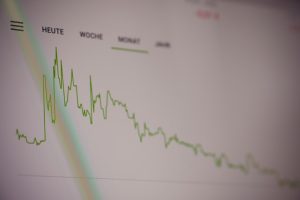Forex trading is a high-risk and complex financial activity that requires traders to have a good understanding of the market dynamics and the tools they can use to manage their trades effectively. Take profit and stop loss are two of the most important tools that traders use to manage their risk and protect their profits. In this article, we will explore what take profit and stop loss are, how they work, and why they are crucial for successful forex trading.
What is Take Profit?
Take profit is a trading order that allows traders to close their positions automatically when they reach a predetermined profit level. It is a limit order that traders set to ensure that they do not miss the opportunity to take profits in a fast-moving market. Take profit orders are placed above or below the current market price, depending on whether the trader is buying or selling a currency pair.
For example, if a trader buys EUR/USD at 1.1200, he can set his take profit at 1.1300, which is 100 pips above the entry price. If the market moves in the trader’s favor and reaches 1.1300, the take profit order will be executed automatically, and the trader will lock in his profit. On the other hand, if the market does not reach the take profit level, the trader will remain in the trade until he decides to close it manually or until his stop loss is hit.
Take profit orders are essential for forex traders because they help them to manage their trades effectively and avoid emotional decision-making. By setting a take profit, traders can remove the temptation to hold onto a winning position for too long, which can lead to losses if the market reverses. Take profit also helps traders to maintain their trading discipline and stick to their trading plan.
What is Stop Loss?
Stop loss is a trading order that allows traders to close their positions automatically when they reach a predetermined loss level. It is a risk management tool that traders use to limit their losses and protect their capital. Stop loss orders are placed below or above the current market price, depending on whether the trader is buying or selling a currency pair.
For example, if a trader buys EUR/USD at 1.1200, he can set his stop loss at 1.1100, which is 100 pips below the entry price. If the market moves against the trader and reaches 1.1100, the stop loss order will be executed automatically, and the trader will exit the trade with a loss. On the other hand, if the market does not reach the stop loss level, the trader will remain in the trade until he decides to close it manually or until his take profit is hit.
Stop loss orders are crucial for forex traders because they help them to manage their risk and protect their capital. By setting a stop loss, traders can limit their losses and avoid catastrophic losses that can wipe out their trading account. Stop loss also helps traders to avoid emotional decision-making and stick to their trading plan.
Take Profit vs. Stop Loss
Take profit and stop loss are two sides of the same coin in forex trading. While take profit aims to lock in profits and prevent traders from holding onto a winning position for too long, stop loss aims to limit losses and protect traders from catastrophic losses. Both take profit and stop loss are essential for successful forex trading, and traders should use them in conjunction with each other to manage their trades effectively.
When setting take profit and stop loss levels, traders should consider several factors, including the market volatility, the trading strategy, and the risk-reward ratio. Traders should also adjust their take profit and stop loss levels as the market conditions change and avoid setting them too close to the entry price, which can lead to premature exits or stop outs.
Conclusion
Take profit and stop loss are two crucial tools that forex traders can use to manage their trades effectively and protect their profits. Take profit allows traders to lock in profits and avoid holding onto a winning position for too long, while stop loss helps traders to limit losses and protect their capital. Both take profit and stop loss are essential for successful forex trading, and traders should use them in conjunction with each other to manage their risk and maximize their profits.






